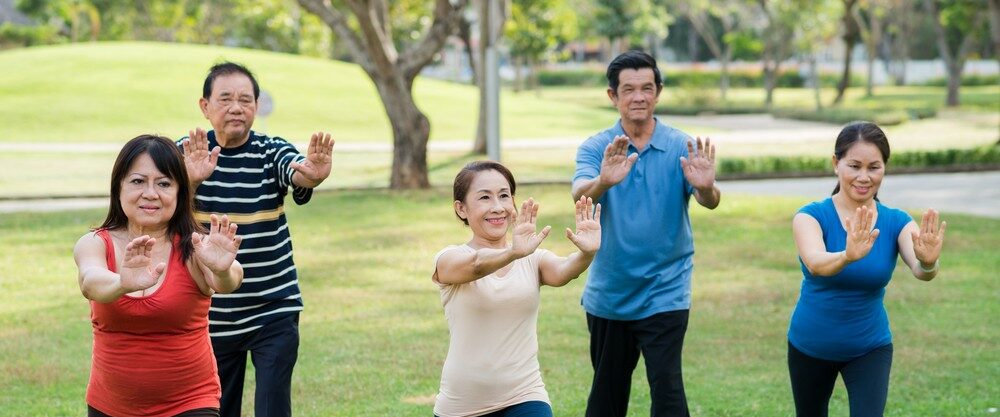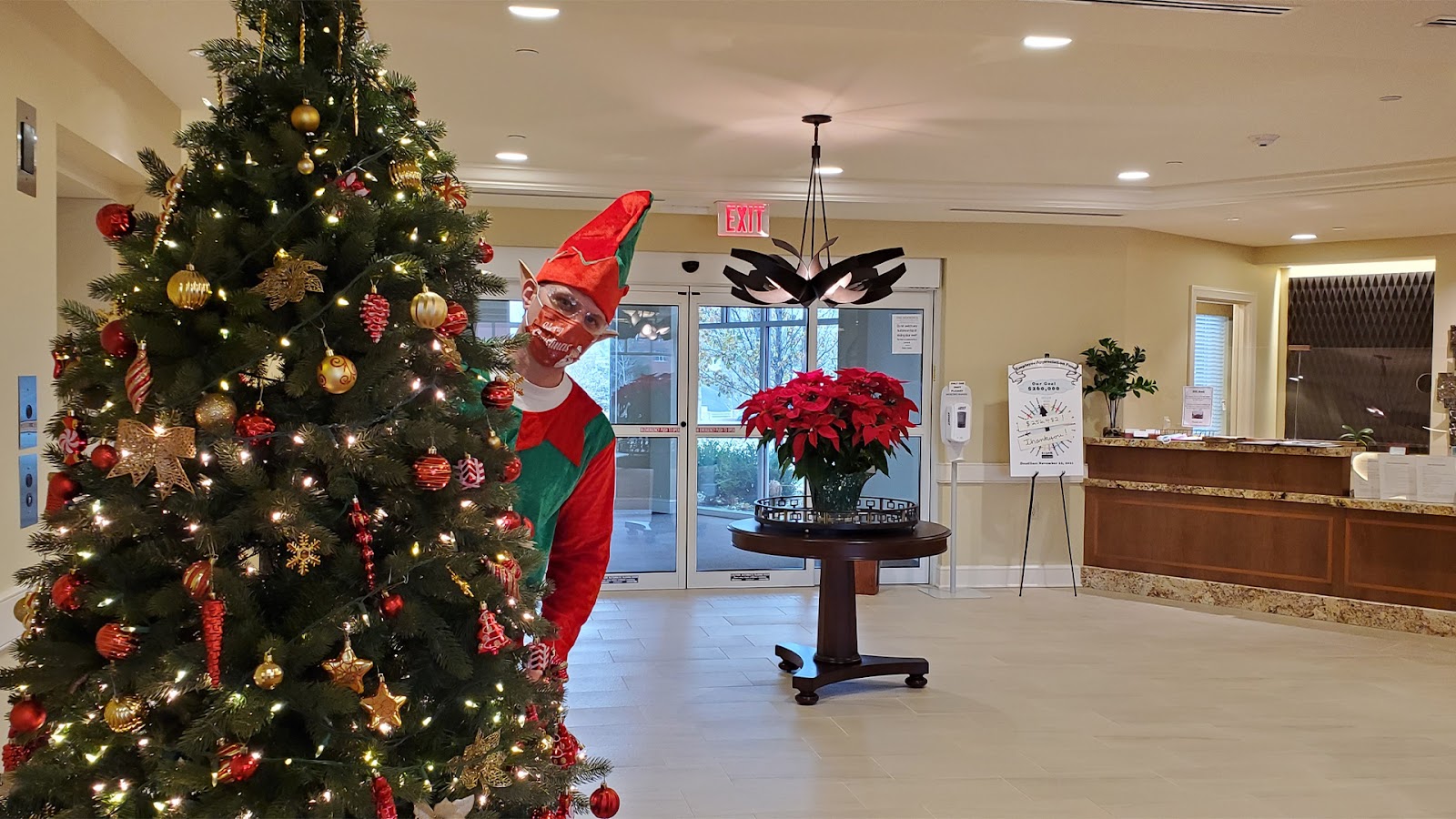Benefits of Doing Tai Chi for Seniors

Tai Chi sounds exotic, but it’s actually a mainstream form of exercise. In fact, tai chi for seniors is one of the hottest trends in fitness. The simple reason is that it’s easy to master, and it has wonderful mental and physical benefits.
Originally developed thousands of years ago in China as a form of martial arts, tai chi has evolved to a practice more akin to meditation. In fact, it’s often referred to as “meditation in motion.” The modern form can be performed just about anywhere you have a little space to move around. Best of all, you don’t need any special equipment or clothing to do it. It’s best to wear comfortable clothing such as yoga pants or sweats to allow fluid movement, and you’ll want to lace on a pair of comfortable, flexible shoes like athletic walking shoes, rather than running shoes.
Tai Chi Explained
Tai Chi includes a healthy portion of everything a senior’s mind and body needs. It’s great for improving balance, calming the emotions, promoting flexibility, working the core, and creating an overall feeling of senior wellness. The series of graceful, deliberate movements that make up tai chi have a meditative quality that help you focus on mindful breathing and connecting mind and body, all to elicit a sense of inner peace.
Unlike many other exercises for seniors, tai chi doesn’t require you to be in top shape or even in the best of health. The movements, with poetic names like “White Crane Spreads its Wings” and “Seated Cloud Hands” can be performed sitting in a wheelchair for example, or with the aid of a chair or walker.
Beginners to the practice are encouraged to take classes to become familiar with the short form and long form movements. It’s very likely that you can find a tai chi class near you for seniors, but if you’re fortunate enough to live in one of the three Life Plan communities in the Presbyterian Homes group, you’ll be able to take advantage of free tai chi classes right on campus.
Tai chi for seniors typically focuses on short form movements, which are ideal because they tend to feature easier stances and slower movements to master. Of course, as you progress in skill and confidence, you can find online training videos that teach the more challenging long form movements.
A Practice with Proven Results
With so many benefits, it’s no wonder that tai chi continues to grow in popularity. And it’s not just the followers who love it. Doctors also recommend tai chi for seniors because of its many benefits.
The shifts in body weight that come with performing many tai chi movements help promote better balance. These shifts also improve a lesser-known sense known as proprioception, which is the ability to sense the position of one’s body in space. Proprioception declines as we age – practicing tai chi helps maintain it.
In fact, a fall prevention study by the Journal of the American Geriatric Society found that the practice of tai chi reduced the rate of falls by 43% over the short term (less than 12 months.) It also noted a 50% reduction in the rate of injury-related falls. Those findings are supported by many other studies, including one conducted by the Emory University School of Medicine, which showed that Tai Chi classes help reduce falls risk by almost 50%.
Researchers have even found that tai chi for seniors reduces how often people fear falling. Among a group of adults 70 years and older who regularly practiced tai chi, fearful thoughts of falling decreased from 56% to 31%. A similar study of older adults found that 54% of the subjects who practiced tai chi attributed their improved sense of confidence to improved balance.
Types of Tai Chi for Seniors to Explore
The beauty of tai chi is that there’s always something new to learn and master, and that’s exactly what senior minds and bodies need to flourish! Three of the more common short form types of tai chi are:
- The Tai Chi Chih Style – The chih style involves 20 movements done in a high narrow stance. This is best for beginners who want to improve their balance with easier movements.
- The Wu Style – This style involves 24 to 36 movements (there are 100 movements in the traditional form!) performed in a narrow stance with knees relaxed but not bent. It’s ideal as a step up for beginners as they gain confidence.
- The Yang Style – The simple form of Yang includes 24 movements (there are 108 movements in the traditional form!) performed in a wide stance with knees bent. This is a style to progress to once you’re more experienced in the practice of tai chi.
At Presbyterian Homes, we focus on whole-body health and wellness. That’s why we offer tai chi in our three Life Plan communities near Chicago, including The Moorings of Arlington Heights, Lake Forest Place, and Westminister Place. Contact us today to schedule a tour!



